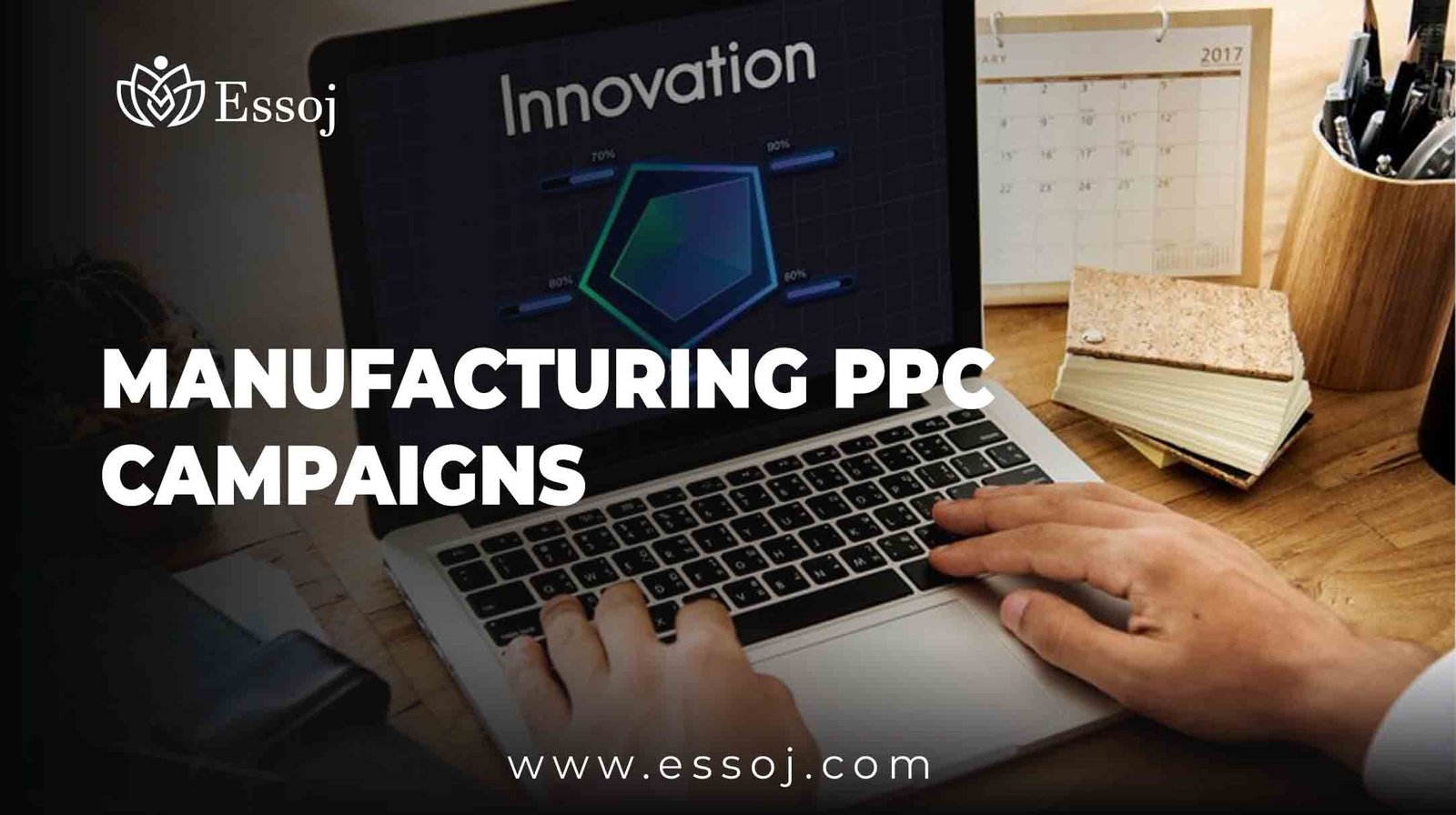Pay-per-click (PPC) advertising has revolutionized the way businesses connect with their customers online. For the manufacturing sector, which historically relied on traditional sales and networking, PPC represents an incredible opportunity to reach a highly targeted audience quickly and effectively. In this comprehensive guide, we’ll explore the ins and outs of Manufacturing PPC Campaigns—how they work, why they’re crucial, and, most importantly, how you can build and optimize campaigns that deliver real business results.
Whether you’re new to PPC or looking to improve existing campaigns, this article will break down everything you need to know. We’ll include step-by-step instructions, common pitfalls, and insider tips to help you master PPC advertising for manufacturing.
What Are Manufacturing PPC Campaigns?
At its core, a Manufacturing PPC Campaign is a digital advertising effort that uses pay-per-click ads to promote manufacturing products or services. These campaigns appear on search engines, social media platforms, and other websites where your target customers are searching for manufacturing solutions. Unlike broad marketing, PPC lets you precisely target prospects by keywords, geographic location, device type, and more, ensuring your ads show to people actively looking for what you offer.
Think of PPC as a powerful spotlight shining exactly where your potential buyers are. For manufacturing companies—whether they produce machinery parts, raw materials, or industrial equipment—this means getting in front of decision-makers when it matters most.
Why Are Manufacturing PPC Campaigns Vital in Today’s Market?
The manufacturing industry has evolved dramatically over the last decade. As buyers increasingly research products online before making purchases, digital visibility is more critical than ever. PPC fills this gap by offering:
- Immediate Visibility: PPC ads can appear at the top of search engine results pages (SERPs) almost instantly after campaign launch, unlike SEO which takes months to show results.
- Precision Targeting: You control who sees your ads based on keywords, industries, locations, and more. This avoids wasting budget on uninterested audiences.
- Measurable Impact: Every click, impression, and conversion is tracked, giving you clear data on what’s working and what’s not.
- Cost Efficiency: Pay only when someone clicks on your ad, helping control marketing spend and improve return on investment (ROI).
- Brand Building: Even if users don’t click, repeated exposure to your brand increases awareness and trust over time.
For instance, a manufacturer of robotic assembly parts can use Manufacturing PPC Campaigns to target engineers searching “automated assembly line components,” positioning their brand at the forefront of potential buyers’ minds.
Step-by-Step Guide to Launching Effective Manufacturing PPC Campaigns
Launching a successful PPC campaign in the manufacturing space involves careful planning, research, and ongoing optimization. Here’s an expanded, detailed walkthrough:
Step 1: Set Clear Objectives
Begin by defining what success looks like. Are you aiming to:
- Generate sales leads?
- Increase website traffic?
- Boost awareness in a new market?
Clear objectives help tailor your PPC strategy, messaging, and measurement.
Step 2: Research Your Target Audience Deeply
Manufacturing buyers are typically professionals—engineers, procurement managers, plant supervisors—who want precise, reliable information. Understanding their challenges and language will help you craft messages that resonate.
Ask:
- What problems do they face?
- What solutions do they seek?
- What terms do they use when searching?
Step 3: Comprehensive Keyword Research
The foundation of any PPC campaign is the right keywords. Use tools like Google Keyword Planner, SEMrush, or Moz to identify:
- High-intent keywords (e.g., “industrial CNC machining services”)
- Long-tail keywords (e.g., “precision metal fabrication London”)
- Competitor keywords to analyze gaps
Don’t forget to include negative keywords to filter out irrelevant searches such as “DIY,” “cheap,” or “jobs.”
Step 4: Crafting Powerful Ad Copy
Ad copy in manufacturing PPC campaigns should be direct, clear, and focus on benefits. Some tips:
- Use numbers and specifics: “Reduce Production Time by 30%”
- Include calls to action: “Request a Free Quote” or “Download Our Brochure”
- Highlight certifications or unique technologies your company has
Always align your ad copy with your landing page content for consistency.
Step 5: Designing Conversion-Optimized Landing Pages
Your landing pages must:
- Load quickly and work well on mobile devices
- Clearly explain your offer and benefits
- Include strong calls to action (contact forms, phone numbers, downloads)
- Use testimonials or case studies to build trust
For example, a landing page for “custom metal fabrication” could include an easy-to-fill RFQ (Request for Quote) form and samples of previous work.
Step 6: Fine-Tune Targeting Settings
Define your:
- Geographic locations (target regions where your customers are based)
- Device preferences (desktop vs. mobile)
- Time of day or week when ads should show (based on when your target buyers are most active)
You might exclude certain locations or times to avoid wasting budget.
Step 7: Budget Allocation and Bid Strategy
Set your daily and monthly budgets based on your goals. For competitive keywords, consider manual bidding to control costs or automated bidding strategies for efficiency.
Step 8: Launch, Monitor, and Analyze
Once live, monitor key metrics:
- Impressions: How many people see your ad?
- Click-through rate (CTR): Percentage clicking on your ad
- Conversion rate: Percentage taking your desired action
- Cost per click (CPC) and cost per acquisition (CPA)
Make adjustments weekly based on performance.
Step 9: Continuous Optimization and Testing
Always be testing:
- Different headlines and descriptions
- New keywords or negative keywords
- Ad extensions like sitelinks, call buttons, or location info
- Landing page layouts and calls to action
Continuous refinement can increase ROI significantly over time.
Common Mistakes to Avoid in Manufacturing PPC Campaigns
Even experienced marketers can stumble in PPC management. Here are pitfalls to watch out for:
- Broad Match Overuse: Using broad match keywords without restrictions can waste money on unrelated searches.
- Ignoring Mobile Users: More searches now happen on mobile—ensure ads and landing pages are mobile-friendly.
- Skipping Conversion Tracking: Without tracking, you won’t know which ads or keywords deliver results.
- Poor Keyword Research: Missing key buyer terms or neglecting long-tail keywords limits reach.
- Unclear Calls to Action: Ads or landing pages without a clear next step confuse prospects.
- Not Leveraging Remarketing: Ignoring the power of targeting past visitors reduces potential conversions.
Real-Life Example: Manufacturing PPC Success Story
Consider a medium-sized company manufacturing industrial valves. Before PPC, most leads came from trade shows and word-of-mouth, leading to inconsistent sales.
They launched Manufacturing PPC Campaigns focusing on keywords like “industrial valve supplier UK” and used compelling ads emphasizing quality and quick delivery. By pairing ads with landing pages showcasing customer testimonials and case studies, they increased lead volume by 60% within six months.
They also used remarketing to remind website visitors about their solutions, driving up conversion rates. This real-world story illustrates how targeted PPC can accelerate growth in manufacturing.
Advanced Strategies for Top-Tier Manufacturing PPC Campaigns
To take your campaigns to the next level:
- Use Audience Targeting: Layer demographic, interest, and company size data to pinpoint decision-makers.
- Test Ad Extensions: Use sitelinks to direct users to specific product pages, call extensions for direct contact, and location extensions if you serve local markets.
- Incorporate Video Ads: Showcase your manufacturing processes or product demonstrations on platforms like YouTube.
- Implement Call Tracking: Assign unique phone numbers to track leads originating from ads.
- Leverage Automation and AI: Use Google’s automated bidding and responsive search ads to optimize for conversions.
- Geo-Fencing: Target specific factories or business parks near your operations.
How to Measure and Report Success in Manufacturing PPC Campaigns
Tracking your campaigns is crucial. Focus on:
- CTR: High CTR indicates your ads resonate with searchers.
- CPC: Keeping costs reasonable ensures budget efficiency.
- Conversion Rate: The ultimate measure of whether clicks turn into leads or sales.
- CPA: How much you spend per lead or sale; lower CPA means better profitability.
- ROAS: Revenue compared to ad spend; a key financial metric for ROI.
Regularly generate reports and analyze trends to identify areas for improvement.
Wrapping Up
Mastering Manufacturing PPC Campaigns takes time, but the rewards can be substantial. With precise targeting, compelling ads, and ongoing optimization, PPC can drive qualified leads, build brand awareness, and significantly impact your manufacturing business’s bottom line.
If you’re ready to start or improve your PPC campaigns, focus on clear goals, deep audience understanding, and continuous learning. Remember, PPC is dynamic—stay flexible and data-driven for the best results.

